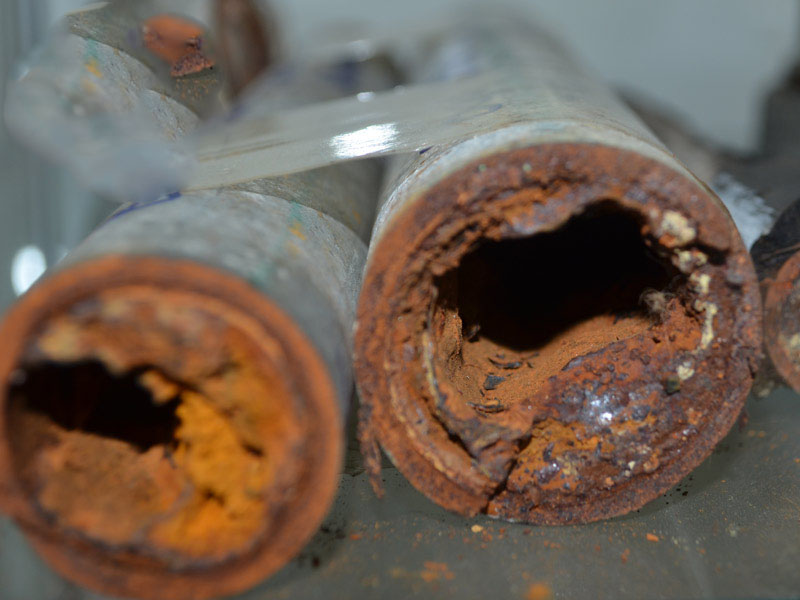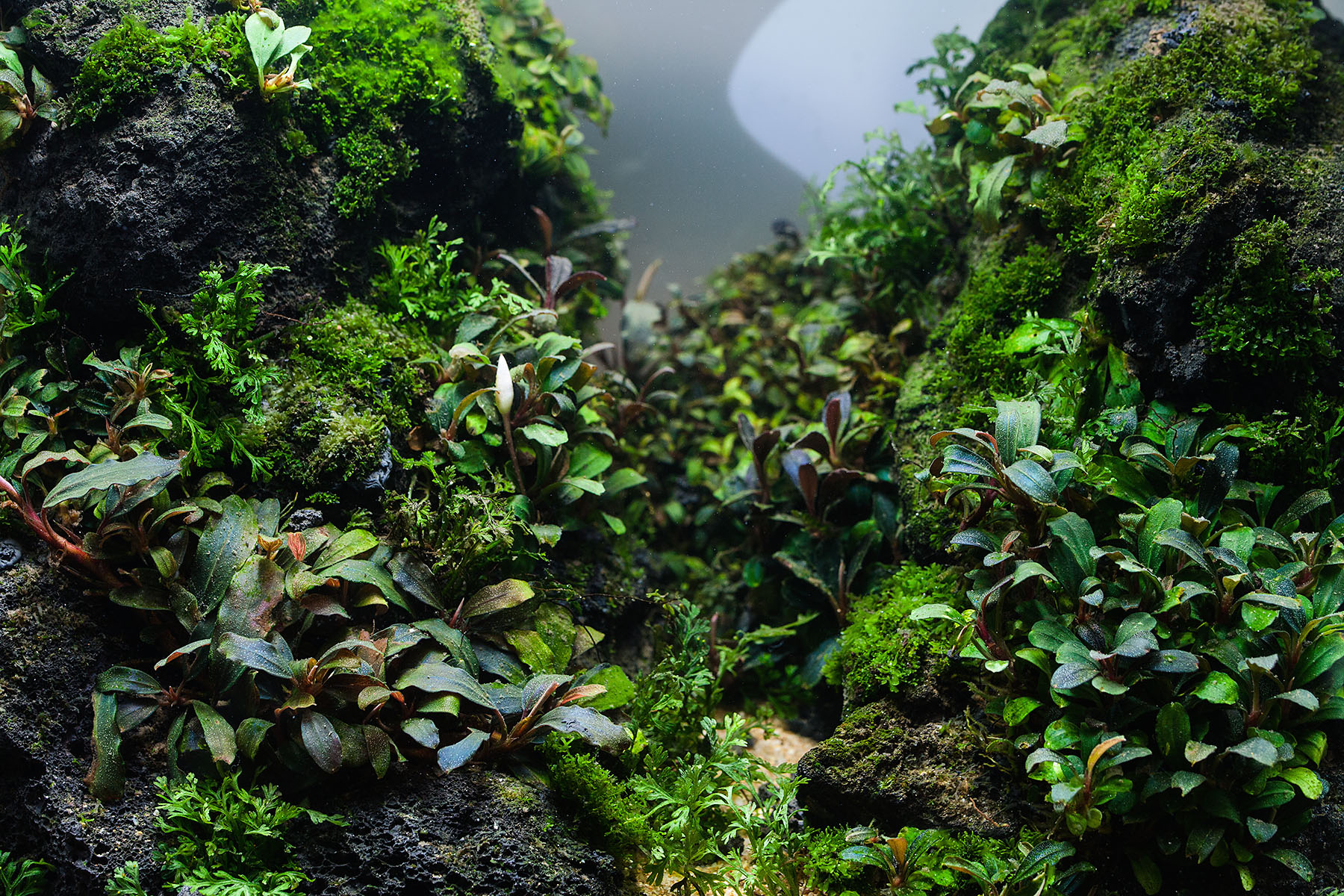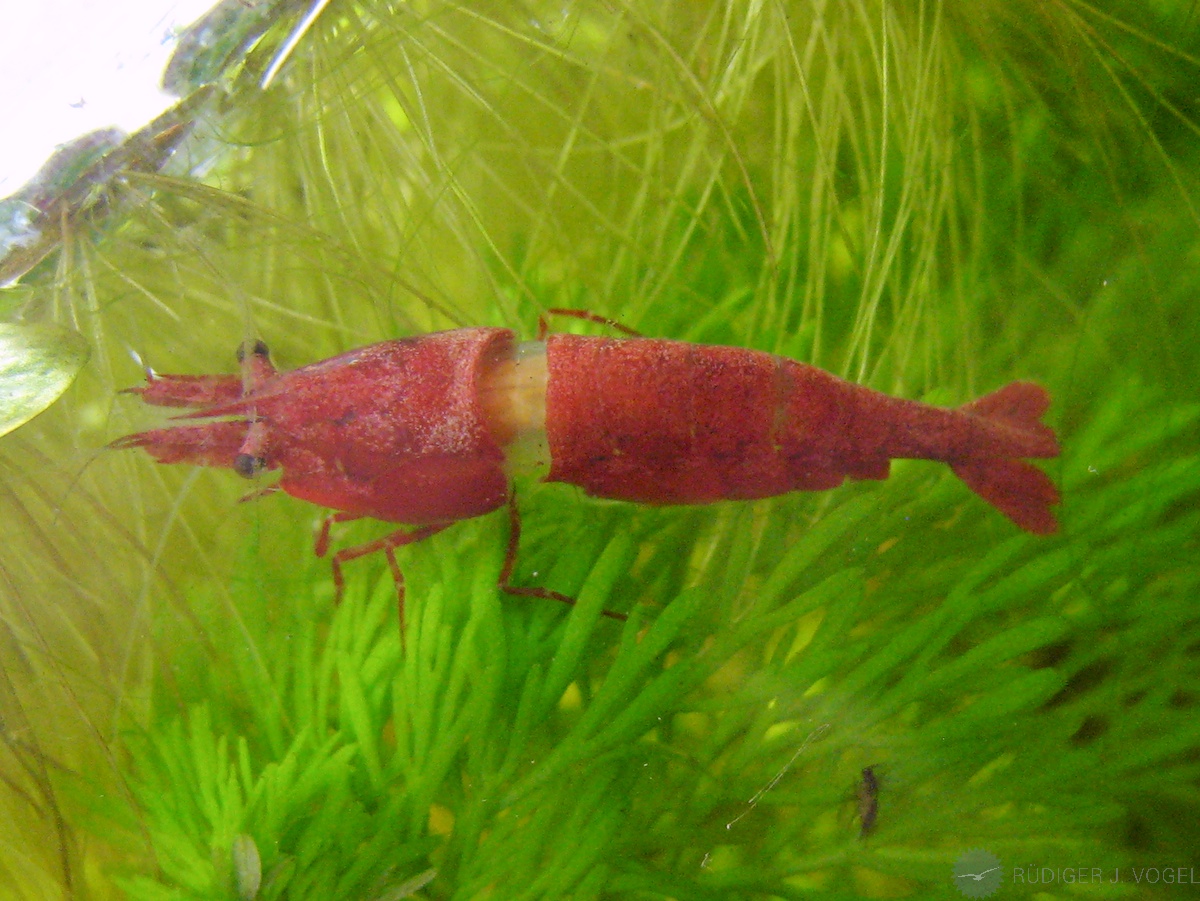Deadly trap : pollutants in shrimp aquarium - what to do?
Shrimps are more sensitive than ornamental fish
That pollutants are harmful, we do not need to discuss, that already says the name. In the shrimp aquarium we do not want pollutants twice, the small colorful jewels are unfortunately known to be very susceptible to poisoning of all kinds. Ornamental fish are much more tolerant.

Safety first: Despite upstream active carbon filter and osmosis system, we use with every water change NH Crusta ToxEX Liquid
Source of danger: Waterworks / water pipes
Shrimps are sensitive creatures - their low weight makes them susceptible to even small amounts of pollutants that fish do not even flinch at. Especially heavy metals like copper, lead and silver are deadly for shrimps even in quantities that are not even detectable with conventional tests from the specialized trade. Heavy metals such as copper, silver, cadmium or lead can quickly kill them, even if they accumulate gradually in the aquarium - for example over several water changes. Especially copper can be introduced through the water pipes in the house, silver is used by some waterworks for disinfection. Chlorine, which is often used for this purpose, is also absolutely deadly for shrimps. Anyone working with tap water should always keep these dangers in mind in order to be able to take countermeasures if necessary.

Even if Neocaridina shrimps enjoy the reputation of being particularly robust, there are regularly various reports about deadly poisonings in almost all specialist forums.
Source of danger: organic pollutants
But not only heavy metals, but also other pollutants like the nitrogen compounds ammonia and nitrate are toxic for the animals. Nitrate in higher concentrations from 25 mg/l can lead to miscarriage of skin, especially in dwarf shrimps, ammonia is a strong cell poison and causes a disturbance of the energy metabolism. Already a low concentration of 0.6 mg/l has an absolutely lethal effect on shrimps and by the way also on some species of fish.
This sight will be familiar to experienced shrimp keepers, once poisoned animals or animals with moulting problems are unfortunately almost impossible to save!
Caution is better than Indulgence
Of course, it is better to take precautions right away so that the worst-case scenario - acute or gradual poisoning with toxic heavy metals, ammonia, nitrate or chlorine - does not occur in the first place. With a water conditioner you are on the safe side. NatureHolic's new Crusta ToxEx Liquid is based on natural minerals, which bind pollutants such as heavy metals or ammonium / ammonia in a physical way and thus effectively render them harmless.
NatureHolic ToxEx Liquid is an important part of our three-phase liquids: it is used to eliminate harmful substances such as heavy metals, chlorine and ammonium / ammonia in the water. With CrustaHumin Liquid and BakterLiquid from NatureHolic, ToxEx forms a powerful trio for all kinds of water problems - both acute and preventive.
With Crusta ToxEx Liquid you eliminate harmful substances in the water, with Crusta Humin Liquid you add important humic substances that make the water really suitable for invertebrates, and with Crusta Bakter Liquid you support the formation of vital biofilms in the aquarium and ensure that the colonization of these biofilms takes place optimally and that the right bacteria can settle in the aquarium in the first place.
The NH Bundle is currently available in the store for 19,99€ instead of 23,85 (16% savings)
Most problematic for stream shrimp
Especially shrimps that occur in nature in very clean streams (tiger shrimps, bee shrimps and their variants such as Taiwan shrimps and various wild-caught shrimps such as Aura Blue or Galaxy) have shown to be much more sensitive than the comparatively robust Neocaridina, which often live in stagnant waters with a naturally higher pollutant load and are therefore better adapted to such conditions. However, also with Neocaridina the end of the line is reached sometime, one should pay attention also with them therefore very well to the water quality.

In nature there is constant water change, we can hardly offer this to our shrimps in the aquarium.
Where does the water pollution by heavy metals come from?
How do pollutants get into the water? There are different possibilities. When using medications against fish diseases, for example, you put them directly into the aquarium. In particular, copper is often contained here - please always read the package insert before use and especially look out for the statement as to whether the agents are harmless to invertebrates!
But also in water pipes copper can be dissolved. Especially the water change is therefore a critical time, and often one hears of dying shrimps directly after the actually so important and also good exchange of a part of the old aquarium water against fresh. Here, however, not only copper is problematic, also zinc or (in very old houses with unrenovated piping system) lead can be contained. Furthermore, especially in summer the tap water is often treated with silver (also a deadly poison for shrimp) or chlorine (also not better) to counteract contamination in the tap water and possible bacterial contamination at high temperatures or heavy rainfall.
If you have copper pipes, it is recommended to let the water drain well first. Chlorine must be degassed - to do this, let the water for changing the aquarium stand for at least a day and then fill it into the tank using a shower. A lot of water movement allows chlorine to escape more quickly. However, if silver is added to the tap water at the latest, these methods are unfortunately invalid.

Once the shrimp-damaging substances have been neutralized, nothing stands in the way of shrimp feeling comfortable and reproducing successfully.
Where does the water pollution by organic pollutants come from?
Organic pollutants such as ammonium/ammonia and nitrate, on the other hand, are the result of natural processes in the aquarium. They are formed when uneaten food, feces, dead plant remains or even dead animals are metabolized by bacteria. In areas with agriculture, however, nitrate can also be present in tap water in doses that are already too high. The limit value for human consumption is 55 mg/l - for shrimps this is already much too much!
Some fertilizers also contain ammonium and nitrate. In very heavily planted tanks with low stocking, intensive lighting and additional CO2 fertilization, it may even be necessary to add nitrogenous fertilizer. However, this is almost exclusively the case in aquascapes where the above is the case. In our 08/15 living room plant aquariums or also in shrimp breeding tanks nitrate will hardly become scarce. Therefore, additional fertilization should only be done if there is a very clear indication (plants have clear deficiency symptoms and a nitrate value is not measurable).
Especially in less planted aquariums with soft water and a pH below 6.5 - i.e. an optimal aquarium for breeding bee shrimp and their variants like shadow or taiwan shrimp - the natural degradation of metabolic products, the nitrification by bacteria, may be impaired. This is because the "good" bacteria actually need a higher pH to work optimally. For this reason, the ammonium content can increase considerably in this tank, especially since the few plants present cannot absorb as much ammonium as is formed. Remaining ammonium will sooner or later be metabolized to nitrite, which in water with a low pH below 7 can also have a toxic effect on the shrimp's gills. Nitrite is also converted by bacteria - to the nitrate already mentioned above.

Healthy water means healthy shrimp
Water changes as a panacea?
Multiple sources of danger for our invertebrates! The proven advice: "Do a water change!" in case of problems does not apply if the problems come from the used (tap) water.

We care for half a million invertebrates a year in the Garnelio facility without a proper water care system it would not work.
Our recommendation: ToxEx Liquid
The new ToxEx Liquid from NatureHolic belongs to the physically working pollutant binders. It is based - true to NatureHolic's motto - on high quality natural minerals. ToxEx Liquid has been systematically tested in one of Germany's largest invertebrate facilities for over a year. There it has proven itself in use many times over. ToxEx Liquid has been proven to remove unwanted nitrogen compounds: Ammonium, ammonia and nitrite can thus no longer pollute the water and also the animals. Heavy metals such as copper and silver and toxins such as chlorine and drug residues are also neutralized. After an initial turbidity, the water becomes crystal clear and invertebrate-friendly again in a short time.
The pollutants that are physically bound to the minerals settle to the bottom substrate. Here they are removed more or less completely and above all effectively with the possible mulm suction during the water change or during the annual exchange of an active substrate and can thus no longer cause any damage. Tests have shown that mineral-based water conditioners work much safer than the chemical variants often used in aquaristics.
For emergencies and after the use of medications you should always have a bottle of Crusta ToxEx Liquid ready, but it is also suitable for regular use during water changes and for general water care and can also be used preventively.

Order Natureholic Crusta Toxex Liquid now

